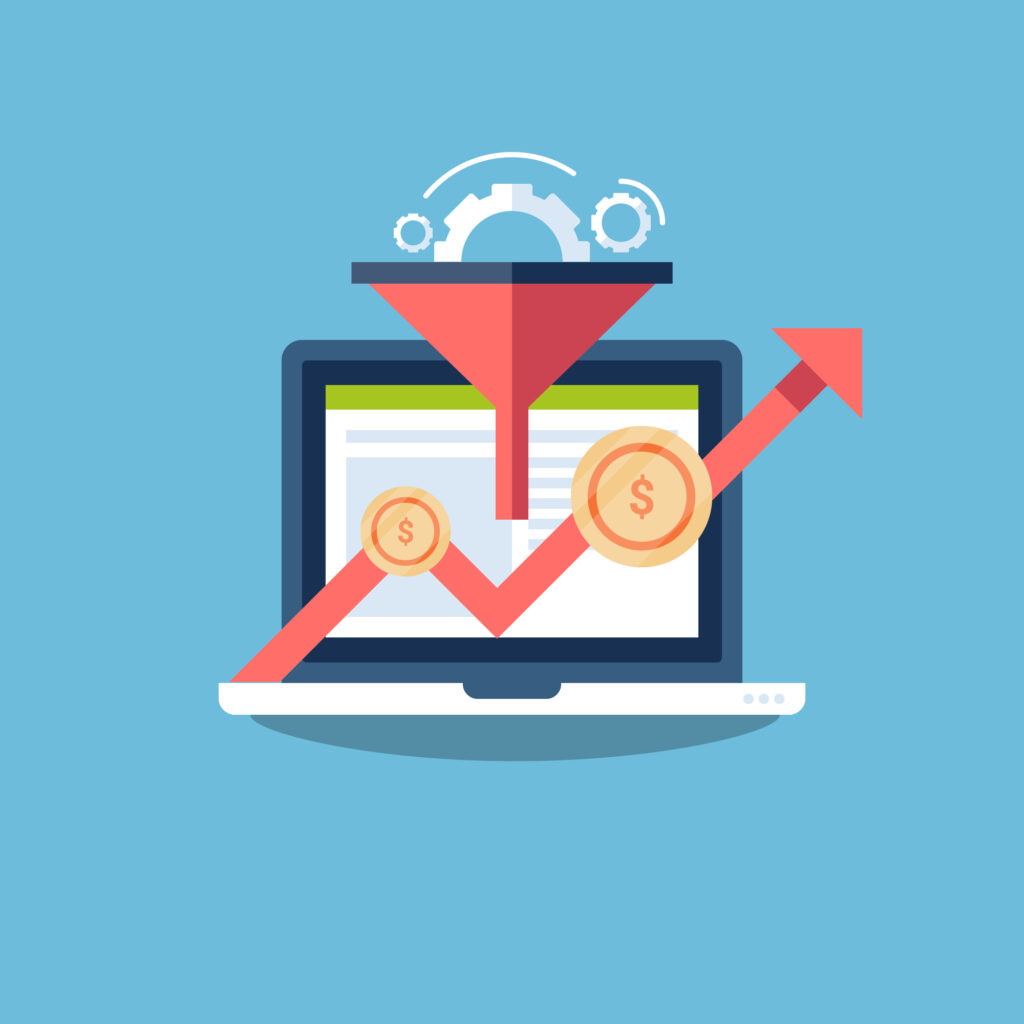Conversion Based Campaigns

We know we’re partial, but there are a lot of advantages to marketing in a digital world. One of the greatest heros in a digital campaign is the ability to track your conversions. Not only can you track conversions, but you can take the information you’re given in real time and change gears on ad creative, targeting, budget, or channels in order to increase them. So let’s talk through conversions, what they are, how they’re tracked, and what works best.
what is a conversion?
Conversions fall into three major buckets; onsite actions, offline actions, and website engagement. When we think of onsite actions, we’re talking about places your customers can interact with the website like pressing buttons, completing form submissions, clicking links or making purchases. Offline actions take place outside of your website, like making a phone call or visiting your brick and mortar.
When measuring website engagement as a conversion, we evaluate session duration, or the length of time a user spends on your website. Almost counterintuitively, successful website engagement can mean a lot of time spent on the site or it can mean a high bounce rate. If your goal is for users to interact with the information and resources on your site, then high session duration, viewing multiple pages per session, and a low bounce rate is a measure of success. If your goal is to drive traffic to another site, a high bounce rate and short session length means you’ve achieved your desired conversion.
how are conversions tracked?
Most conversions are tracked through third party platforms, like Google Tag Manager. A snippet of code is placed on the website and events are set up to send data back to the advertising platform you’re using, such as facebook, Linkedin, Google Ads Global Pixel, or Microsoft Advertising Conversion Pixel.
Google Analytics, Google Ads and Google Tag Manager set the gold standard. By connecting these accounts you can set conversion goals and tell Google what data you’d like to measure. Google Ads will pull this data in based on the events you create and tell you where your conversions are stacking up against your goals.
what can you do with this data?
1 Optimize digital campaigns manually or automatically toward specific actions
Optimizing in this context means testing elements to build on what you learn. You can emphasize elements that drive conversions and back off on elements that are spending money but not driving Return on Ad Spend (or ROAS. Unlike ROUSes, it actually exists.) Things to test and adjust here might be calls to action, ad copy and keyword bids or using behavior signals to optimize ad elements for automated campaigns.
2 Optimize landing pages, site structure and forms to maximize conversions
This might include making website adjustments or publishing engaging, useful content that pushes users to take a next step or move through your marketing funnel. This will allow you to measure and increase Return on Ad Spend (ROAS) based on the value of a conversion. Pay special attention to contact and information request forms, or making your site more mobile-friendly.
what kind of digital campaigns work best?
Your digital campaign is more likely to perform if you have clarity of your marketing funnel and put strategies in place that hit all parts of the funnel. For a lot of businesses, this means a combination of:
- Reach and awareness campaigns like display and social that let the user know you are out there and what you offer
- Retargeting through display, social and search that pulls a known user back into the funnel
- Search engine marketing which allows you to get in front of the user at the point of decision
Digital is mighty in its ability to track and measure conversions. The might of this tool is almost directly proportional to the time individuals and organizations have to collect data, analyze, and optimize based on your findings. If you have questions about analyzing your conversions or suggestions for future blog topics to learn more about what would be helpful in your business, hit us up!
Go forth. Go Digital.
-cohort.crew



